Cosmetic Veneers: how long do they last?
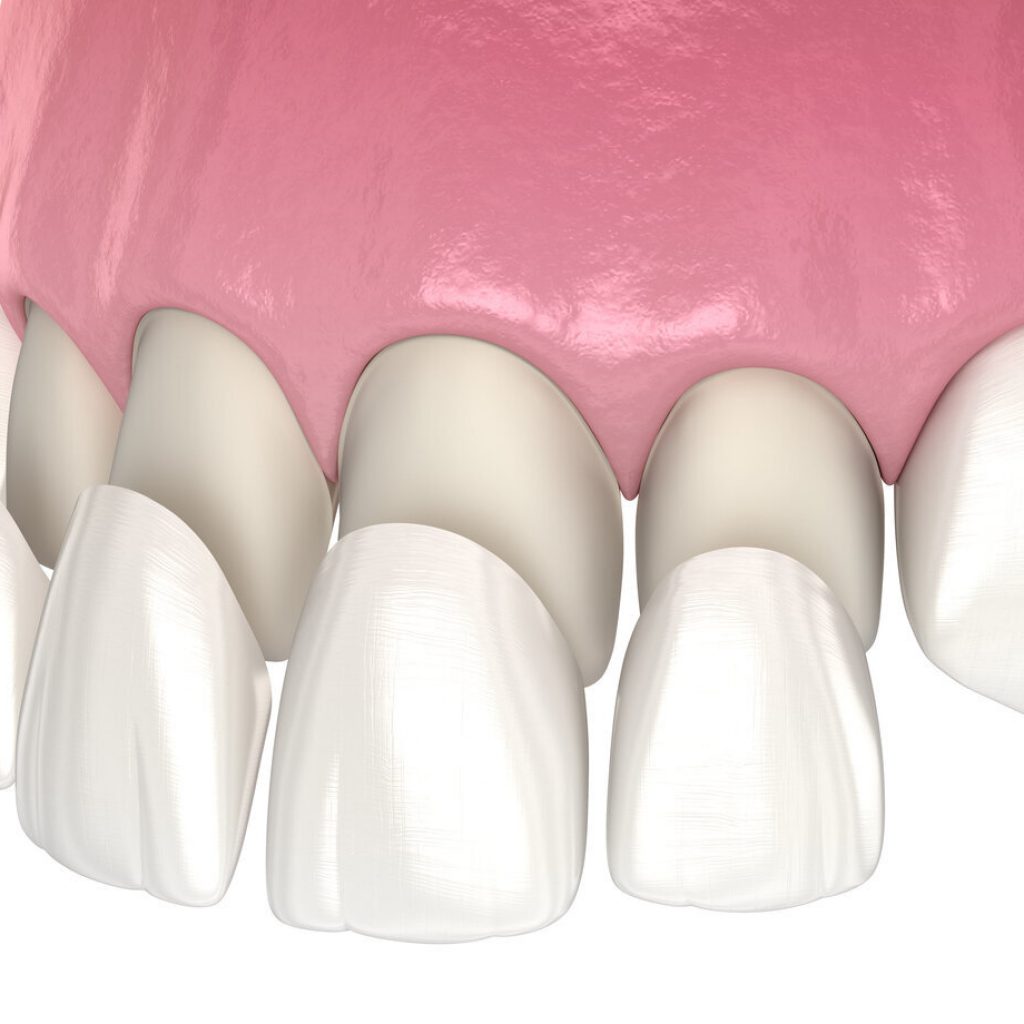
After being disgruntled with your smile for as long as you can remember, maybe you’ve finally found the solution: cosmetic veneers! Everything you’ve read online talks about how amazing they are for addressing multiple cosmetic flaws at once and completely revamping your smile. A little more due diligence , however, shows that they can be quite an investment as well, so then you start to wonder, “What can I do to make sure my cosmetic veneers look incredible for as long as possible?” We’ll answer this question and more today so you can know just how to make your new smile stand the test of time.
Cosmetic veneers are composed of extremely thin ceramic coverings that are bonded to the front of the teeth in order to improve their appearance. Cosmetic veneers are one of the most effective ways to makeover and maintain your smile. Modern day dental porcelain is often just as strong or stronger than natural enamel, so you won’t have to worry about them breaking just from biting into a piece of food. On average, porcelain veneers tend to last for about 10 years, but they can last for even longer with the right maintenance. Many patients have porcelain veneers that still look great after 20 years. The longevity of porcelain veneers often comes down to how a patient takes care of them after they have been placed. For instance, if the underlying natural teeth start to decay because of a lack of oral hygiene, this can severely affect how the veneers look. The veneers, just like your natural teeth, can also become stained if they are regularly exposed to foods and beverages such as coffee, tea, wine, or dark colored berries. Plus, while dental porcelain is very strong, it does have its limits. If you were to chew on a piece of ice, for example, there is a chance a veneer could break, but this is true for your natural teeth as well, which is why you should always avoid chewing extremely hard things.
The key to making cosmetic veneers last is to take care of your veneers just like the rest of your smile. You can keep them white and prevent the supporting teeth from breaking down by simply brushing and flossing every day in addition to getting regular checkups with your dentist in San Marcos.. You can also protect them further by wearing a mouthguard whenever you participate in sports and a nightguard if you grind your teeth while you sleep. Just by following these simple tips, you can easily keep your new smile looking great for over a decade or more.

Tooth Extraction: What to expect?
Having a tooth extracted by your dentist can cause some anxiety. But knowing what to expect before, during, and after the treatment is half of the battle that will aid you in avoiding any painful infections and will help to speed up the healing process, too. Like any surgery, having teeth removed requires recovery time, and there will also typically be pain and discomfort. Here’s what to expect after having a tooth pulled and what you can do to help promote healing until you start to feel like yourself again.
Tooth extraction is a relatively very common dental treatment, and recovery typically takes about a week. Depending on your specific case, a few factors can cause you to experience an extended recovery time. Be sure to follow your dentist’s instructions on how to best care for the space where the tooth was extracted to avoid any delays in healing.
Healing Process
Most patients can fully recover from tooth extraction surgery in a few days. If your teeth were impacted or came in at an awkward angle, it could take a whole week to recover.
In the case of wisdom tooth extraction, the wound left behind after surgery won’t be considered completely healed for months, so you can still develop an infection weeks after surgery. Taking proper care of your mouth and the surgical sites by paying attention to any signs of trouble is the best way to ensure your mouth heals properly.
You can resume normal daily activities the day after surgery, but it’s suggested to avoid any activity that could dislodge stitches or the blood clot over your surgical site. Activities you should avoid include:
- exercise
- Smoking
- Drinking from a straw
- Spitting
Tips
Help your body heal and decrease your healing time after having a tooth extracted by ensuring you have the following tips factored into your recovery.
Nutritional Eating
For the days immediately following a tooth extraction, you’re going to be more inclined to eat things that are soft and not extreme in temperature. However, living off of mashed potatoes and ice cream isn’t going to help promote healing from within. Eating nutritious meals even though you may not feel like it is vital to the healing process. Fruit and vegetable juices are a nutritious alternative to empty-calorie eating.
Oral Hygiene Care
Do not use an electric toothbrush while your mouth is healing, and avoid brushing over the surgical sites. Using antibacterial mouthwash twice a day for one to two weeks will be prescribed by your doctor. Avoid using over-the-counter mouth rinses like Listerine, Scope, or other rinses that are not prescribed.
Salt Water Rinse
A warm salt water rinse will gently rinse your mouth four times per day, starting 24 hours after surgery. A saltwater rinse is a great way to promote healing naturally.
No Smoking
Do not smoke or chew tobacco as it may increase the risk of a dry socket which is very painful. Call your doctor right away if you are experiencing worsening pain a few days after the extraction so that a dry socket can be appropriately treated. Any increase in pain, swelling, or concerns regarding the healing process should be immediately directed to your oral surgeon or dentist.
Some swelling, pain, and bleeding are usual symptoms after having teeth removed. Call your dentist immediately if you experience excessing bleeding or unbearable pain. The third-day post-surgery should significantly improve all symptoms, and all pain and bleeding should be gone within a week of surgery.
Experiencing complications could be a sign of infection or nerve damage. Contact your dentist right away if you experience any of the following symptoms including:
- Trouble swallowing
- Difficulty breathing
- A fever
- Medication not effectively dulling the pain
- Swelling that gets worse over time
- Numbness
- Blood or pus coming out of your nose
- Bleeding that does not stop after applying pressure with a gauze pad
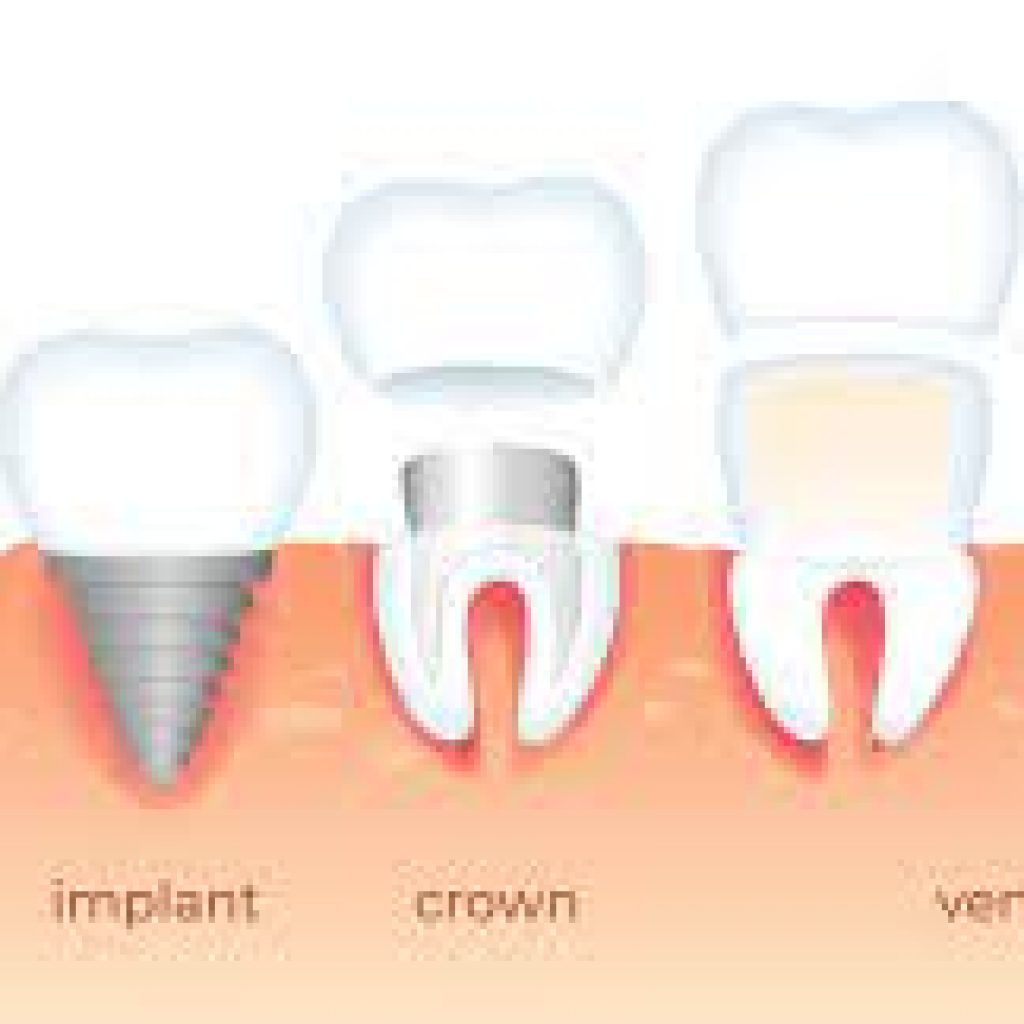
Cosmetic Veneers Vs Dental Implants
Deciding about the pros and cons of cosmetic veneers versus dental implants will help you determine the best procedure for your needs. Once you make the decision to talk to your dentist about ways to rehab your smile, you will likely have to choose between two restorative dental procedures: porcelain veneers or dental implants. Depending on your situation or level of tooth decay you have as well as each procedure’s potential impact on your oral health issues are the key factors to consider and discuss with your Little Rock dentist. There is a significant difference in the cost of veneers vs implants that you will have to factor into your decision, too.
Tooth Damage
Cosmetic veneers work best as a total fix for minor cosmetic damage to your teeth, including chips, cracks, and or stains. You may also want to choose cosmetic veneers if you are attempting to fix any slight spacing or alignment issues without the use of braces. For major damage, such as teeth broken at the gum line or other restorative dental issues, dental implants will provide the most long-term benefit. Dental implants will fully replace the entire broken or damaged tooth structure, which has an added benefit of preventing infections and other complications in the future.
Bite Correction
If you recently lost a tooth and are looking to prevent bite alignment issues that impact your ability to smile, chew, or talk, you should consider dental implants. The implant fills in the gap to help your teeth remain aligned and well-spaced. When placing the implant, your dentist may build up your jawbone or gum tissue to further correct or protect your bite. Veneers, on the other hand, cannot rectify bite issues, though they can resolve perceived aesthetic imperfections caused by poorly spaced teeth.
Length Of Procedures
When you invest in dental implants, you are paying for a repair and preventative care that will last at least 25 years. Your age at the time of the implant placement process will greatly influence the potential need for implant replacement in the future. Porcelain veneers, however, will usually last about 10 years before requiring replacement or adjustment. Veneers are very quick and easy to replace since preparing your teeth for them makes up the bulk of the work during the initial procedure.
Weigh the Veneers vs. Implants Cost
When you weigh the cost of cosmetic veneers vs implants, you have to consider your time and effort in addition to your finances. The financial costs for implants and veneers over the course of your life may actually come out fairly evenly. Veneers can cost up to $1,000 per tooth, with replacements required every 10 years, while implants can cost up to $5,000 per tooth for a relatively more permanent solution.
Your time commitment for implants will actually outweigh veneers, especially if you need bone or gum grafts placed to support your dental implant. Additionally, you may need to go to additional checkups for your dental implants, while porcelain veneers are fairly low maintenance once they are placed over your tooth.
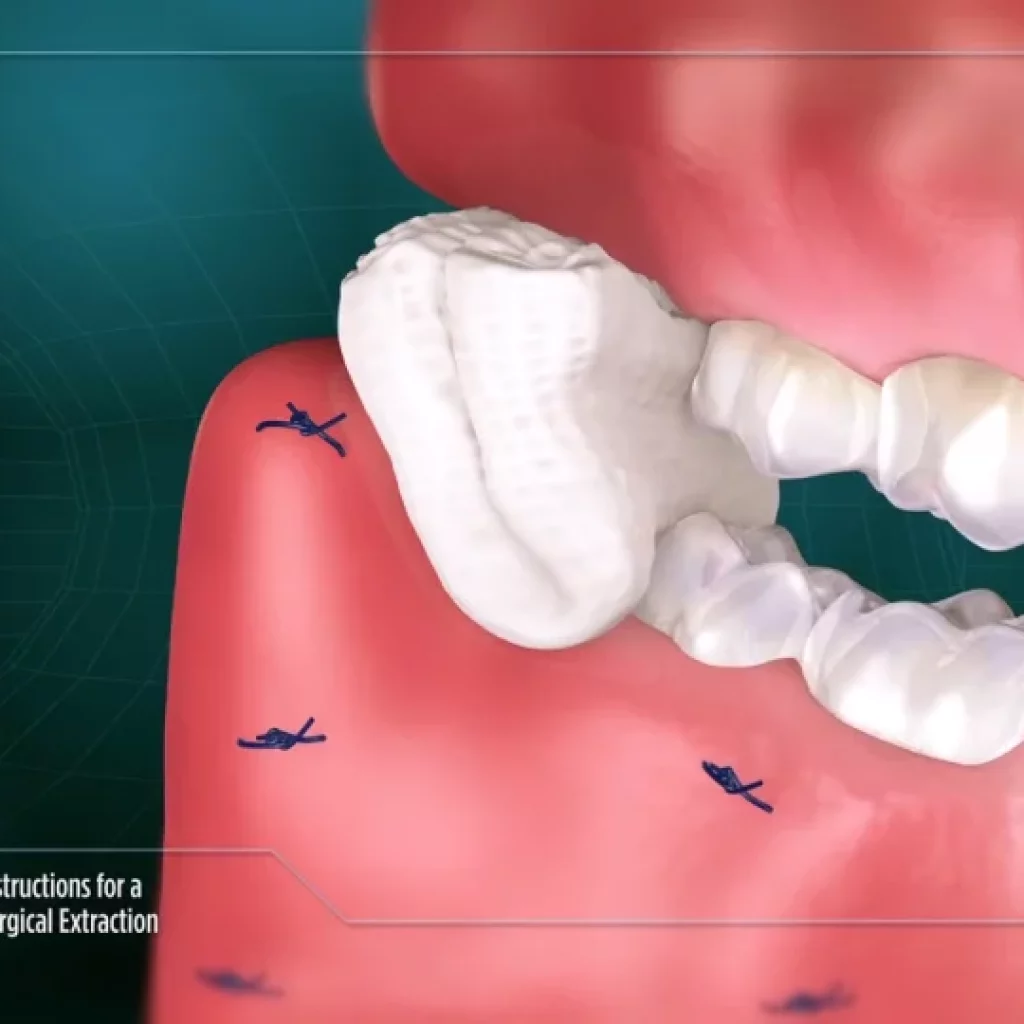
THE TELL TALE SIGNS OF INFECTION: AFTER A DENTAL EXTRACTION
A bone infection after tooth extraction is a threatening malady. If not treated, a patient can go into sepsis. Sepsis is a type of infection that is caused by anything virus, bacterial, or fungal that enters the bloodstream and can impair flow to the vital organs in your system. As the infection worsens, it can impact your breathing, affect the oxygen levels throughout your body, can cause dehydration, and can even lead to mental and emotional distress. If you are worried that you have signs of infection after oral surgery, please call your dentist for an appointment.
If you suspect that you could have an infection after a tooth extraction, it is best to see your dentist immediately. The risk for sepsis increases the longer a bone infection remains untreated, as such several dentists offer same day, urgent care treatment of this serious condition. Saltwater rinses can help with pain while you’re waiting for an appointment. Your dentist will drain the infection, if possible, to speed up the healing process and then prescribe an antibiotic.
An infected socket after tooth extraction is commonly mistaken for a dry socket, which is the result of your tooth socket being empty and having raw bone exposed. There’s no infection, swelling, or redness. However, it’s a painful condition that takes a long time to heal. Once teeth are extracted, and if the blood clot gets dislodged, it is basically raw bone on all sides. This is why a dry socket can be so very painful and why people think they have an infection when they don’t.
An infected socket after tooth extraction is a whole other story. It is caused by the bacteria infecting the gumline around the exposed socket within one or two days of the extraction, causing swelling and redness. An infected socket can be just as serious as a bone infection after tooth extraction, so it’s best to call your dentist right away. An infected socket after tooth extraction can lead to sepsis if not taken care of quickly
Signs of infection after wisdom tooth extraction
These are signs and symptoms that you may have a bone or socket infection after tooth extraction.
– Bad breath
– Bitter taste
– Fever over 101
– Pain that doesn’t respond to prescribed painkillers
-Temperature sensitivity on teeth
– Swollen glands of the neck
– Swelling of the jaw
– Pain at extraction point or socket
– Radiating pain down jaw line
– Difficulty swallowing or breathing
– Excessive bleeding
– Persistent numbness or loss of feeling

WHAT TO KNOW ABOUT DENTAL IMPLANTS?
At any time you have been to a dentist, you might have seen marketing materials regarding braces, crowns or dentures—but what about dental implants? Many individuals aren’t all that familiar with dental implants. In most cases they are often a much better solution to bridges and crowns.
What are dental implants?
A dental implant is a dental prosthetic that literally replaces the root of a failed tooth. Just like a tooth root, dental implants are surgically placed into the jawbone and are not visible once implanted. They are used to secure crowns that will fully replace one or even more teeth. The dental implants are usually made of titanium, which is not only lightweight and strong, but most importantly bio compatible, which means the body will not reject it.
Dental implants as a concept have been proven to be thousands of years old, with bamboo pegs found in China that date to 4,000 years ago. The bamboo pegs were hammered into the jawbone to replace missing teeth. Sounds painful, but technology of modern times usually has primitive beginnings. Modern dental implants; however, are made out of titanium due to their propensity for bonding with bone. In 1952, this characteristic of titanium was accidentally discovered by an orthopedic surgeon studying bone healing and treatments on injured rabbits. By 1965, this surgeon— who by this time had been experimenting with titanium implants for years; placed the first dental implant into a human patient with resounding success.
It’s very likely that you didn’t know that bit of history about dental implants, but there are quite a few more facts about dental implants that most people don’t realize either:
- They Are the Best Way to Replace Missing or Failing Teeth – Most dentists concur that the ability to replace natural teeth with dental implants is a benchmark in history of dentistry. Dental implants are the best way to replace damaged teeth without disturbing the integrity of healthy ones. Dental implants make minimizing collateral damage very easy as they are a 1:1 replacement— taking up only the same space the original tooth did, leaving no gaps or crowding surrounding teeth.
- The Procedure Is Relatively Painless – While having a titanium screw bolted into your jawbone sounds quite painful and arcane; the procedure is actually quite routine and causes very little pain. The rate of success is very high, post-op pain is minimal, and recovery allows for little to no downtime. Of course, each case depends on the complexity of the situation and how many implants are needed, but most patients can return right back to work with just a bit of over the counter pain medication.
- It Can Improve Physical and Emotional Health – For patients with failing teeth, dentures or severely ground down teeth, dental implants can turn their world upside down in a good way. With dentures there is the concern about daily routine, being able to eat the foods you want, and being concerned with dentures moving or falling out in social settings. The emotional stigma alone can lead to psychosomatic physical ailments as well. Using dental implants allows you the freedom to eat, play sports, and interact in social circles as you would normally—without the fear of embarrassment. Because implants are permanently secured to the jawbone you will never have that problem. The crowns that are attached look indistinguishable from natural teeth, so the only way anyone would know you have implants is if you tell them.
- They Are Durable – One of the bright spots in needing dental implants, is that you will never have to worry about cavities again. Now, this does not mean you should neglect oral hygiene as gum disease can be a precursor to heart disease. Just like with real teeth, floss and brush regularly and use mouthwash. Not only does this help maintain good oral health, but you don’t win any friends with bad breath. Since implants are made out of titanium—the same metal used on space shuttles, they are far stronger and have over 50x the longevity of dentures.
- Implants Fortify Your Jaw – Once you replace your missing teeth with strong titanium dental implants, it makes your jawline stronger as well. The reason for this is a medical process known as osseointegration, which is a technical way of saying, the implant fuses with your jawbone. This essentially means the implant actually becomes part of your body and affects your facial structure helping maintain your current jawline and alignment.
- Implants Protect Healthy Teeth – Placing a tooth-supported bridge involves grinding away the teeth on either or both sides of the missing tooth—damaging the supporting teeth to replace a missing one. Those teeth are then used to attach and support the bridge, putting strain on them which can cause them to shift over time. Dental implants are supported by the jaw and do not disturb healthy teeth, in fact they protect them from shifting.
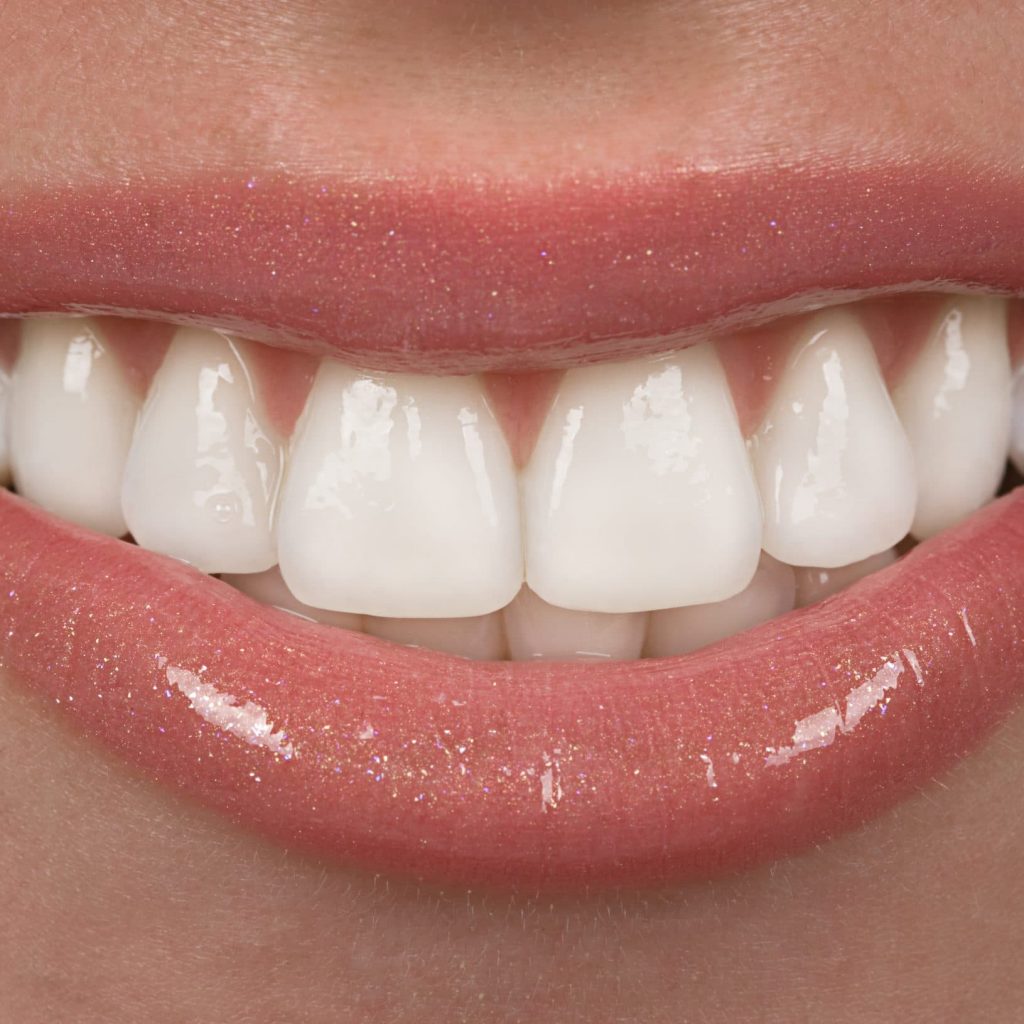
Do cosmetic veneers damage your teeth?
No matter how familiar you are with cosmetic dentistry, you will always have questions about a dental procedure you might be interested in. One of the most frequently asked questions we receive here at San Marcos Dental Center about porcelain veneers is if they ruin your teeth. As one of the most popular cosmetic dentistry treatments, we receive this question quite often. Simply put, the answer is no. Porcelain veneers don’t ruin your teeth. Our cosmetic dentists are here to help you understand the porcelain veneers procedure better!
What are Cosmetic Veneers?
Before we get into the specifics about how cosmetic veneers affect your teeth, we thought it would aid our patients to understand exactly what cosmetic veneers are. Cosmetic veneers are thin sheets of porcelain that we shape to go over the front of your teeth. They can shape or color the veneers however we need to provide you with the results you fancy. Typically these thin sheets of porcelain last for as long as ten years before you need to replace them with a new set. In the years that you have them, your smile will look stunning day after day!
How do cosmetic veneers?
Cosmetic veneers do not damage your teeth in any way as long as you see a qualified cosmetic dentist like ours at San Marcos Dental Center. The first step to providing our patients with cosmetic veneers includes taking x-rays to make sure your teeth are healthy and free of tooth decay. Sometimes we may need to treat your teeth before we can begin your treatment.
Once your teeth are healthy and ready to go, we need to prep your teeth. To prep your teeth for porcelain veneers, we must first remove a thin layer of your enamel to make room for the veneers. Although this might sound harmful to your teeth, it’s not because we’re bonding veneers over your teeth. Your teeth will have even more protection than before and not experience staining like with natural teeth. We then use a special bonding cement to bond the veneer to your teeth. The bonding material is completely safe and does not harm your teeth. This simple procedure provides you with beautiful results that provide your teeth with protection and prevent stains. Over the next decade, you will enjoy your beautiful porcelain veneers. Eventually, you will need to replace them with a new set so they stay looking amazing, but regardless of how many veneers you have over the years, you won’t ruin your teeth. Your teeth are still safe and protected underneath the veneers.
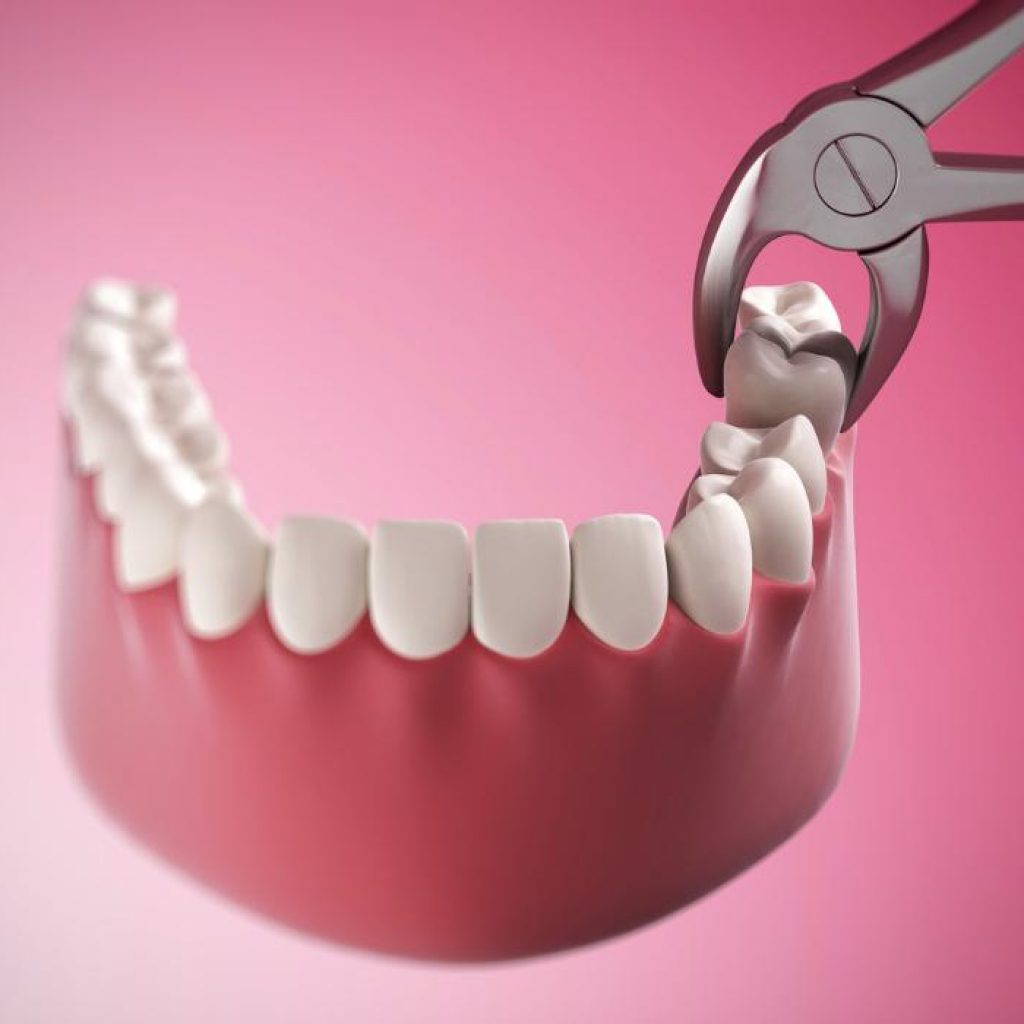
Things to Know about Dental Extractions:
Frightening as it may sound, dental extractions are the most common routine dental procedures. Fortunately, with major advances in modern dental technology your skilled dentist, you’ll be back on your feet in no time. Don’t let this procedure cause you anxiety. San Marcos Dental Center will share some lesser known facts about dental extractions that can help you feel more mentally prepared and to put your mind at ease.
Clotting is Par for The Course
Once your tooth or teeth have been extracted, a blood clot normally forms in its place. This is normal and part of the healing process. It’s important not to disturb the blood clot as that can lead to complications. Your dentist may also choose to give you a few self-dissolving stitches if he feels it to be necessary. They will disappear on their own as your gums are healing.
Painless
Your dentist will completely numb the area in order to perform the extraction, so you won’t be able to feel any pain. As the pain medication wears off, you may feel some discomfort in the area. You can control this with over-the-counter pain pills. If you are feeling an increase in pain as the time goes on, give your dentist a call.
Two Week Recovery
The initial recovery will take a few days. The site should be completely healed two weeks after the extraction. Your dentist may want you to book a follow-up appointment to ensure that everything is healing correctly and looking good.
Soft Foods Only
After your extraction, stick to liquid and soft foods like soup, mashed potatoes, and applesauce. As time goes on, you can add harder foods back into your diet. Avoid chewing on the side of your extraction until the site is fully healed.
Brush Carefully
You should still be brushing your teeth during the healing process, but you need to be extra careful not to touch the extraction site. There’s a possibility that you could dislodge the blood clot which causes a dry socket. When this happens, the bone and nerves underneath are exposed leading to severe pain and a higher chance of infection. Instead of brushing the area, gently swish a saltwater solution around your mouth twice a day to keep the area clean.
AVOID:
As your gums are healing, there are certain things you should avoid. You shouldn’t smoke, rinse or spit forcefully, use a straw, or drink alcohol. Have a friend or family member drive you to and from your appointment.
Keep these things in mind and bring up any concerns you have to your dentist. He will be able to address them so you can go through with your procedure with peace-of-mind.
3 STEPS TO GETTING DENTAL IMPLANTS…
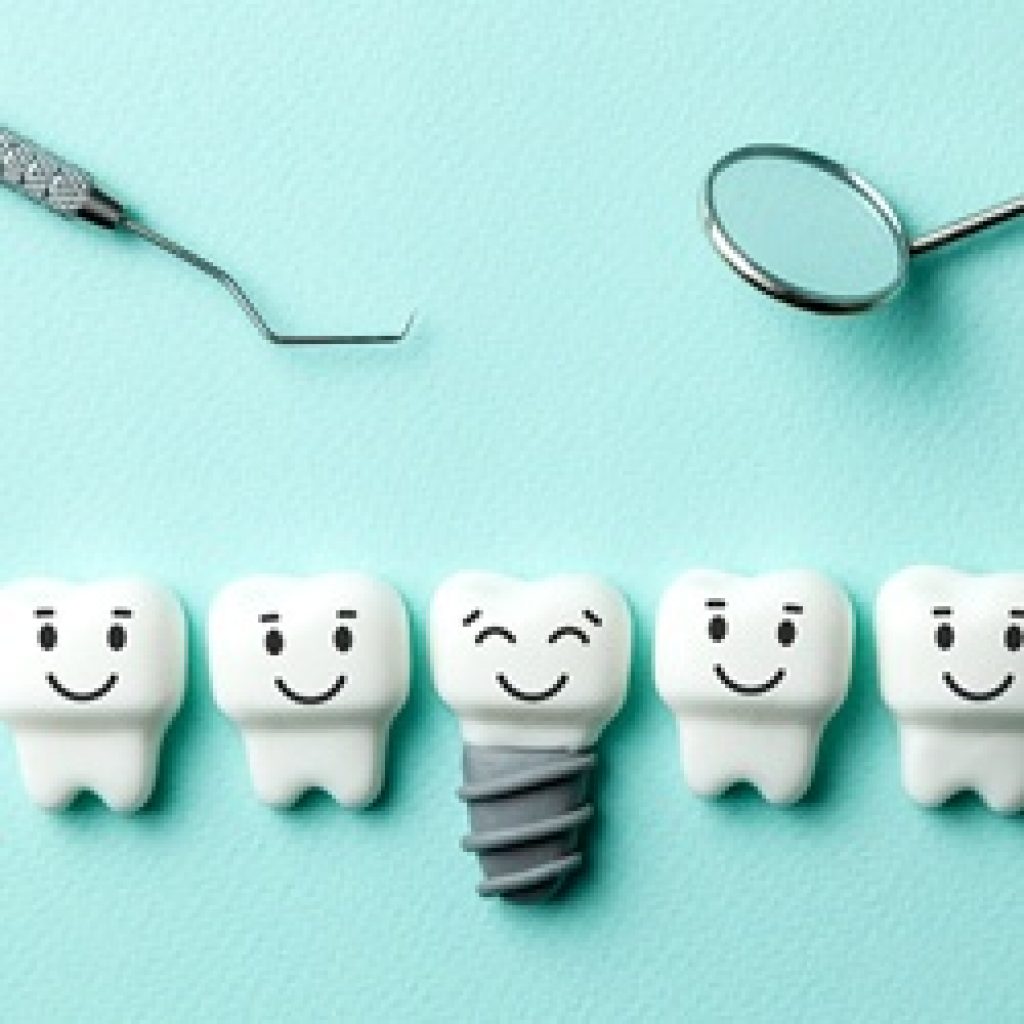
Once you have finished your initial consultation and have decided on a dental implant type you’ll begin a three-step process. San Marcos Dental Center assures your comfort and peace of mind throughout. Giving you a choice of anesthesia services is part of our commitment to offering the best dental implants Long Island has available. If you are apprehensive about dental visits, we’ll keep you as comfortable as possible during your dental implant surgery.
The original tooth has been removed, and you are ready to have it replaced.
Step 1 – Surgery Implant
A short dental surgery at our office, our dentists will surgically place the dental implant in your upper or lower jaw. It will require some light drilling because the implant must fit firmly into the jawbone. The dental implant itself functions like the root of a tooth. Accurately placing the dental implant is where the experience and expertise of the dental implant specialist does factor in. The mouth has so many nerves, and a successful dental implant placement must avoid damaging the nerves as the dental implant passes into. It does require expert knowledge of the mouth and jawbone. Once the surgery is complete, and the implant has been placed, a healing cap goes on top for protection during step 2. Depending on your circumstances, bone grafting may be required. It occurs either during implant placement or before. In either case, you’ll know in advance, and the bone augmentation will be part of your treatment plan.
Step 2: Recovery / Fusing
As dental implants heal they need to fuse to the jawbone. .After your dental implant is surgically placed, it is now time for healing and the recovery process. It is a vital part of the dental implant procedure steps. You need to let the jaw bone grow around the implant in a natural process called osseointegration. It takes some time but is how a dental implant becomes so strong and why implants are the best and most effective tooth replacement option.
Osseointegration is a medical term to describe how the implant fuses to the jaw bone. When complete, the bone locks the implant in place by growing around it to reinforce it, the same as your natural teeth.
This process may take several months. But don’t worry because the healing cap will protect the implant as it heals and you’ll have a temporary crown on top, so it doesn’t look like you have a missing tooth. Once its healing is complete, it’s time for step 3.
Now it is time for the step you’ve been waiting for! Your dentist will attach a custom crown that will look, feel, and function as your new tooth. If you are replacing several teeth or a row of teeth.
What is most vital for you about this step is that you will leave the office with a beautiful new tooth or teeth. No one except you will know that you lost a tooth in the first place. If the tooth is in front, your smile will be restored, and if it is in the back, your chewing ability will be back to normal. The implant placement and tooth replacement are complete. Congratulations!
What can I anticipate having a tooth extracted?
One of the most common plans of action done in our office is dental extraction. The removal of teeth can be required for a number of objective reasons, including:
- Joint problems in your jaw
- Shifting teeth
- Too much damage to tooth to be repaired
- Baby teeth that don’t fall out
- 3rd molars (Wisdom Teeth) impacted (wedged between the jaw and another tooth or teeth)
In preparation for surgery, we will obtain a full medical and dental history, as well as a list of all medications you take. This includes any vitamins, supplements, or over-the-counter drugs, as well as any medications you are allergic to. A dental x-ray is then taken to assess the best way to remove the affected tooth. You may be required to take antibiotics before or after surgery, depending on the duration of the surgery, or if you have a specific medical condition. We will discuss this with you if this is inevitable.
The day of surgery, your oral surgeon will numb the area around the tooth or teeth to be extracted with a local anesthetic, specifically numbing the affected tooth or teeth, your jawbone and the surrounding gums. During the dental extraction process it is common to feel a lot of pressure. The affected tooth is firmly rocked back and forth so as to loosen it for removal. You should not feel any pain, just pressure. If, for any reason, you feel pain, please notify your oral surgeon immediately so that they can administer more numbing agents.
Surgical Extraction
A surgical extraction is a slightly more complex procedure that occurs when a tooth has not yet fragmented through the gum line, or has not yet fully grown into the mouth. When a surgical extraction is needed, your oral surgeon makes a small incision into your gum in order to access the affected tooth. From here, the procedure is similar to a simple extraction. Your oral surgeon may stitch the incision site if necessary.
Post Surgery
After the dental extraction you will be asked to bite down on a piece of gauze for 30 minutes. This pressure helps to form a blood clot in the extraction site, a crucial part of the healing process. Be careful not to dislodge the clot. It is common to have a small amount of bleeding 24 hours after surgery. We will provide you with detailed instructions after your procedure, but here are some important things to remember:
Medications/Pain Management
- Take pain medication as prescribed and recommended by your oral surgeon
- Research has shown that taking anti-inflammatory drugs, such as Advil and Motrin (NSAIDs) greatly decrease pain after an extraction
- Using an ice pack on your jaw can reduce swelling. 10 minutes on and 20 minutes off is standard for the first 24 hours. A warm compress can be used if your jaw is sore after the swelling has gone down
Eating/Drinking
- Eat soft and cool foods for the first few days
- Avoid hot foods and alcoholic beverages for the first 24 hours
- Chew food away from the extraction site
- Do not use a straw or spit after surgery. This can cause the blood cut to dislodge, greatly delaying healing
Brushing/Cleaning
- Avoid brushing the area around the extraction site for the first 24 hours
- Avoid using antiseptic and commercial mouth rinses – they can irritate the extraction site
- 24 hours after surgery you can rinse with warm salt water after each meal and before bedtime (1/2 teaspoon in one cup of warm water)
Healing
The extraction site will generally close up in about 2 weeks time, but it can take three to six months for the bone and soft tissue to regrow. Remember, tooth extraction is a common procedure and our caring team has years of experience helping patients through this easy treatment.
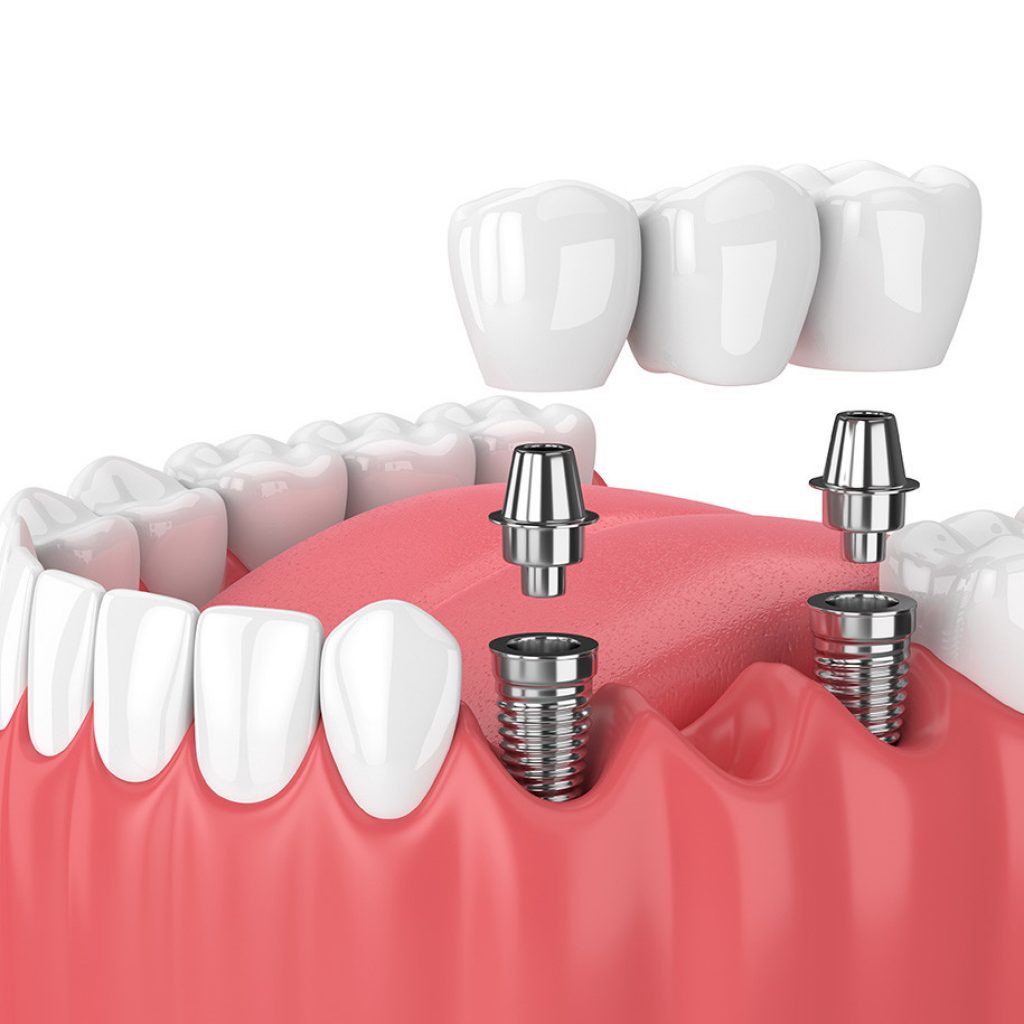
The two types of dental implant procedures:
Endosteal implants are the most customary type. Your dentist will set them using a two stage procedure. These dental implants presume the shape of a little screw and are made of titanium. Surgery is required to perform the implant since it involves drilling a hole to fit the screw into the jawbone. The next step is to insert a temporary tooth over the dental implant during the recovery process to help you maintain that gorgeous smile you desire. .
During the next few weeks or months, while your mouth is given time to heal, you’ll have a couple periodic dental checkups.In addition to the healing process being complete, you’ll undergo a second very minor procedure. This one attaches the dental implant abutment and a permanent crown. However, this type of implant is used for patients who can receive a bone grafting procedure or those with healthy jawbones. That’s because in-jaw implants need enough healthy jawbone structure to support successful fusing.
Compared to endosteal dental implants, a subperiosteal dental implant uses a metal substructure instead of an implanted screw. They are simply placed on top of the bone beneath the gum instead of screwing directly into the jaw. Also, instead of placing the dental implant below the gums where it is barely visible, it is placed on top in order to hold the crown. In a perfect world, this option is for patients who don’t want a jaw grafting procedure or don’t have a healthy jawbone. In addition, subperiosteal implants are placed during a single-stage procedure.
We all want an amazing smile, right?
Accordingly , we encourage you to consider dental implants to replace lost adult teeth. Both of the implant types above are viable options. Note that, although the majority of patients will be best suited for the endosteal implant, subperiosteal implants might offer exceptional results for others. Most importantly, make sure to talk to your dentist. Their advice will guide you to the right choice for your mouth and lifestyle.
